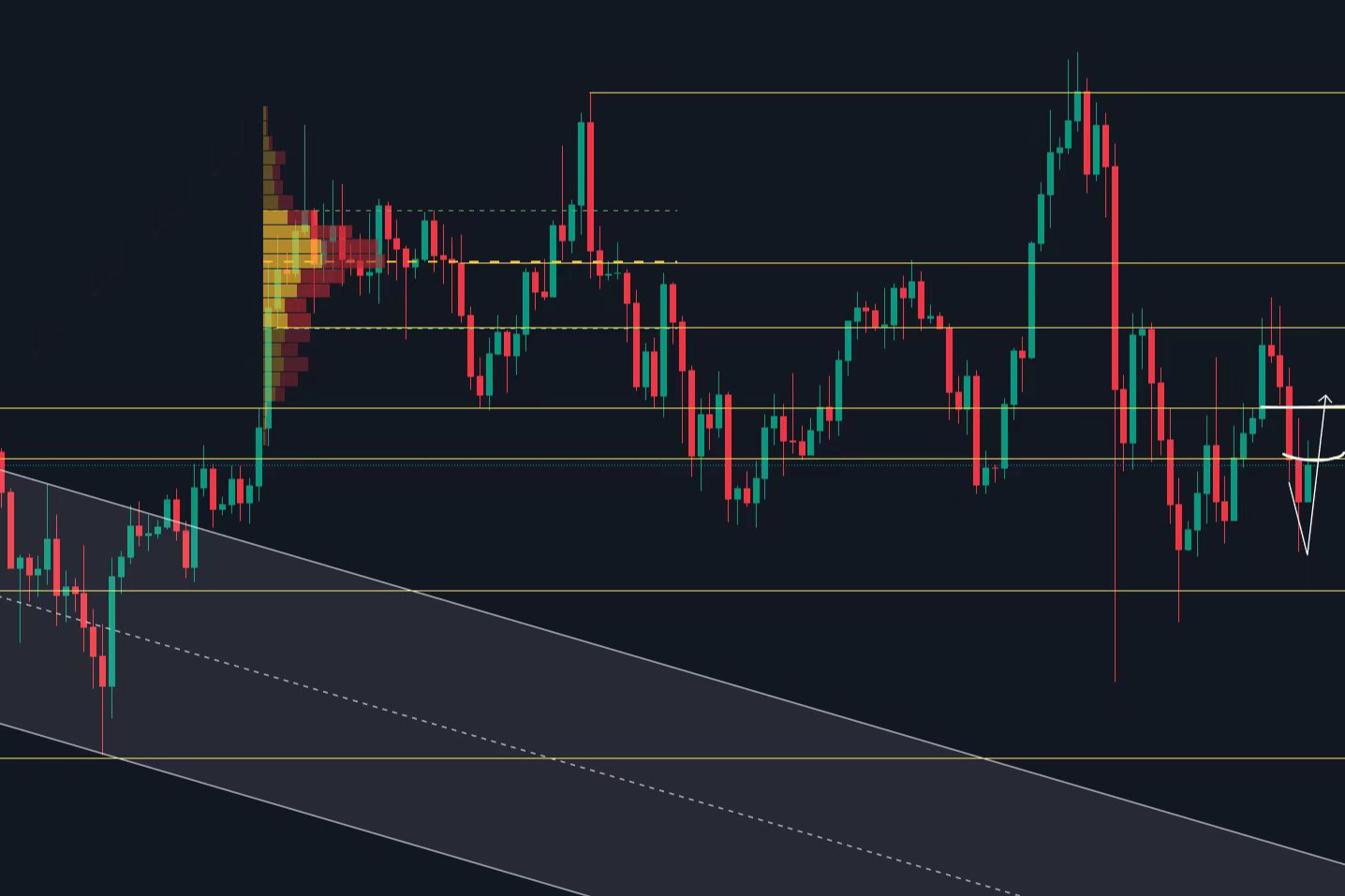Finding Victory in Defeat: The Mindset and Practical Guide to Technical Indicators in Cryptocurrency Short-Term Trading
Late at night, the flickering red and green candlesticks on the screen reflect a weary face. The mouse hovers over the "Sell" button, hesitating for a moment, but ultimately clicks it—another stop-loss exit. This is the fifth time this month that the market has "swept me out." Watching the account balance continuously shrink, the feeling of helplessness and self-doubt almost consumes me: "Why do I always lose money?" "Why are my stop-loss orders always triggered?" "Those seemingly magical technical indicators, why do they fail when they come to me?"
If you have also experienced such torment, please understand: you are not alone. The cryptocurrency market, with its 24/7 trading, high volatility, and relatively immature characteristics, has become a paradise and hell for short-term traders. Here, profit and loss are often separated by a thin line, and what determines the final outcome is not only technology but also mindset and perception.
Facing Losses: Extracting Wisdom from Failure
Losses are a topic that every trader must confront. The cryptocurrency market is highly volatile, with price fluctuations of 20%-30% within a single day not uncommon. Many new investors enter the market with dreams of overnight wealth, but overlook the brutal side of the market.
Psychological Traps Behind Losses:
1.Gambler's Fallacy: "Just wait a bit longer; it might bounce back"—resulting in small losses turning into big ones.
2.Fear of Missing Out: Blindly chasing prices due to fear of missing opportunities.
3.Anchoring Effect: Overly focusing on the purchase cost, affecting objective judgment of current trends.
4.Confirmation Bias: Only seeking information that supports one's judgment while ignoring contrary signals.
Truly excellent traders do not avoid losses; they understand how to "smartly" incur losses—keeping each loss to 1-2% of the total account balance, letting profits run, and cutting losses short. Remember, in the cryptocurrency market, preserving capital is always the top priority.
Decoding Stop-Loss Sweeps: Why Does the Market Always Target Your Stop-Loss Orders?
The phenomenon of "stop-loss sweeps" is particularly common in the cryptocurrency market. Many traders have had the experience of just setting a stop-loss, only for the market to precisely hit that stop-loss level and then quickly reverse, as if there were eyes specifically watching their orders.
The Truth About Stop-Loss Sweeps:
1.Liquidity Hunting: Large funds have the motivation to push prices to areas with concentrated stop-loss orders to obtain better entry prices.
2.Market Structure: Key support and resistance levels often become gathering places for stop-loss orders.
3.Self-Fulfilling Prophecy: When most traders set stop-loss orders at the same position, this behavior itself becomes market momentum.
Strategies to Counter Stop-Loss Sweeps:
Avoid placing stop-loss orders at obvious positions: such as previous highs and lows, round numbers, etc.
Use volatility-based stop-losses: set dynamic stop-losses based on average true range.
Position Management: Reduce the size of individual trades, expand stop-loss space, and give the market more "breathing" room.
Psychological Breakthrough: Accept necessary "jags" and false breakouts as part of trading costs.
The Art of Short-Term Trading: Capturing Opportunities in Millisecond Fluctuations
Cryptocurrency short-term trading is the process of seeking limited certainty amid extreme uncertainty. Unlike long-term investing, short-term trading relies more on technical analysis, market sentiment, and capital flow judgments.
Four Pillars of Successful Short-Term Trading:
1.Trend Judgment: Coordinated analysis across different time frames (multi-time frame analysis).
2.Entry Timing: Entering at the moment with the optimal risk-reward ratio.
3.Position Management: Scientifically allocating positions based on market volatility and account size.
4.Exit Strategy: A clear profit-taking and stop-loss plan to avoid emotional interference.
Due to the 24-hour operation of the cryptocurrency market, there is no concept of opening and closing, which makes the effectiveness of support and resistance levels relatively higher, but also means traders need stronger self-discipline to avoid overtrading.
Decoding Technical Indicators: Beyond the Surface Meaning of Indicators
Technical indicators are the weapons of traders, but the weapons themselves do not guarantee victory. Understanding the intrinsic logic and applicable scenarios of each indicator is more important than blindly following signals.
Core Indicator Analysis:
1. Trend Indicators—Grasping the Market's Overall Direction
Moving Averages (MA): Not just support and resistance, but also trend filters.
Key Usage Points: Dual MA combinations (e.g., 15-period + 50-period), analyzing golden crosses and death crosses in conjunction with price positions.
Common Pitfalls: Blindly following MA signals in a choppy market.
Bollinger Bands: A thermometer for volatility.
Key Usage Points: Bandwidth contraction indicates a breakout is near; price touching the upper or lower bands is not a direct reversal signal.
Advanced Techniques: Combine swing highs and lows to assess trend strength.
1. Momentum Indicators—Capturing Changes in Market Rhythm
Relative Strength Index (RSI): But don’t just use it for overbought and oversold.
The Essence Lies In: Divergence recognition, central breakouts, and alignment with trend direction.
Cryptocurrency Characteristics: Due to high volatility, traditional 70/30 overbought and oversold lines need adjustment.
MACD: A perfect combination of trend and momentum.
True Value: Signal line crossovers, histogram changes, and zero-axis delineation.
Practical Tips: Focus on MACD reactivation after a pullback to the zero axis when the trend is clear.
1. Volume Indicators—Insight into Capital Flow
In the cryptocurrency market, the authenticity of volume needs to be treated with caution, but it can still provide key references:
Volume-Price Coordination: Price increases accompanied by rising volume are healthy signals.
Abnormal Volume: Often a precursor to a trend change.
Volume Distribution: Identifying key price levels where chips are accumulated.
Building Your Trading System: From Fragments to Wholes.
The win rate of a single indicator is limited; true power comes from the synergy and confirmation between indicators. A robust short-term trading system should include:
1.Multi-Time Frame Analysis: Sequential judgment from larger cycles to smaller cycles (e.g., 4H for direction, 15M for entry).
2.Indicator Cluster Verification: Three-dimensional confirmation with trend indicators + momentum indicators + volume.
3.Clear Entry Conditions: At least two different categories of indicators issuing synchronized signals.
4.Risk-Reward Ratio Management: Potential reward/risk ratio of no less than 2:1.
5.Trading Journal: Detailed records of the decision-making process and results for each trade, with regular reviews.
Mindset Cultivation: The Ultimate Realm Beyond Technique
In cryptocurrency short-term trading, mindset is the amplifier of technique and the reason many technical analysis experts ultimately fail.
Four Realms of Trading Mindset:
1.Realm of Ignorance: Not understanding the market or oneself.
2.Realm of Market Knowledge: Learning technical analysis but still being swayed by emotions.
3.Realm of Self-Knowledge: Understanding one's emotional patterns and psychological weaknesses.
4.Realm of Naturalness: Internalizing the system, achieving unity of knowledge and action.
Traders who reach a high realm can maintain emotional neutrality, focusing their attention entirely on executing the trading plan rather than the profit and loss of individual trades.
Conclusion: Finding Certainty Amid Uncertainty
The cryptocurrency market is full of temptations and dangers, and short-term trading is a comprehensive test of a person's knowledge, skills, and mindset. Losses are not frightening; stop-loss sweeps are also part of the market. The key lies in how we learn and evolve from them.
Technical indicators are not crystal balls predicting the future but tools that help us identify probabilistic advantages. Traders who achieve sustained profitability find those small certainties amid vast uncertainties and then use strict capital management and risk control to make time their ally.
Remember, the market is always there, and opportunities will never run out. But your capital is limited; protecting it is protecting your future ability to seize opportunities. Tonight, as the candlesticks begin to dance again, may you find your rhythm in the fluctuations with new insights and mindset.
Finding victory in defeat is not only about the technique of trading but also the wisdom of trading. Respect the market when profitable, reflect on oneself when losing; the market is the teacher, and the balance is the answer. The market is never short of opportunities; what it lacks is discipline and patience.
Giving you a hundred percent accurate suggestion is not as good as providing you with the right mindset and trend. Teaching someone to fish is better than giving them fish; advice may earn you temporarily, but learning the mindset will earn you a lifetime!
Written on: (2025-11-01, 17:30)
(Text by: Daxian Talks Coins)
免责声明:本文章仅代表作者个人观点,不代表本平台的立场和观点。本文章仅供信息分享,不构成对任何人的任何投资建议。用户与作者之间的任何争议,与本平台无关。如网页中刊载的文章或图片涉及侵权,请提供相关的权利证明和身份证明发送邮件到support@aicoin.com,本平台相关工作人员将会进行核查。



